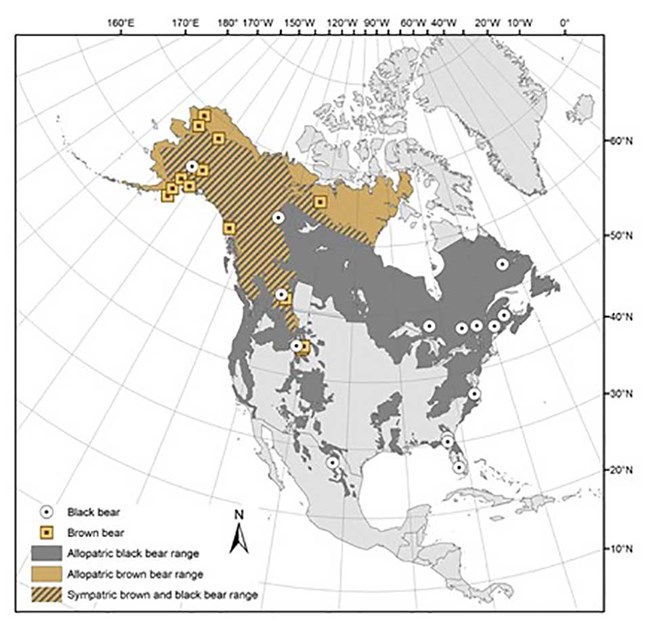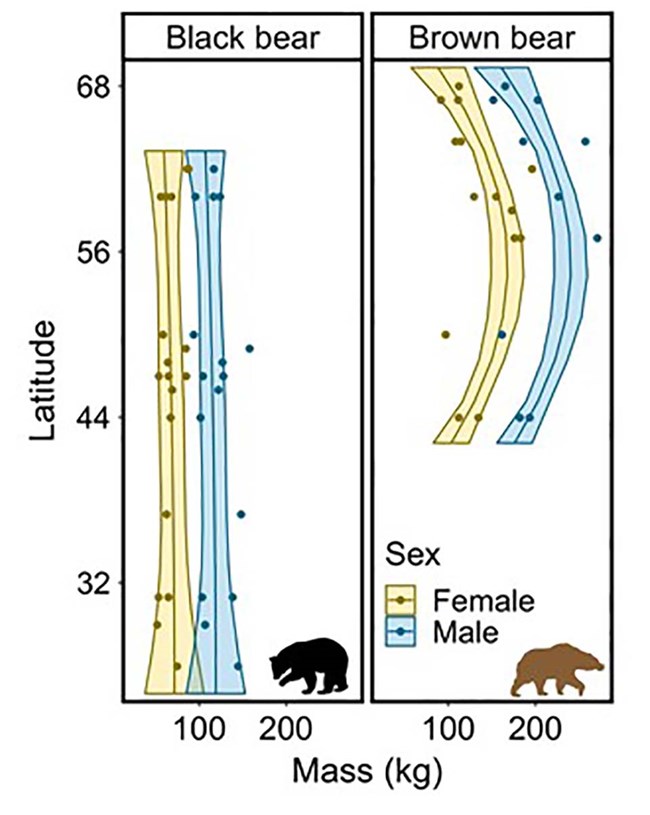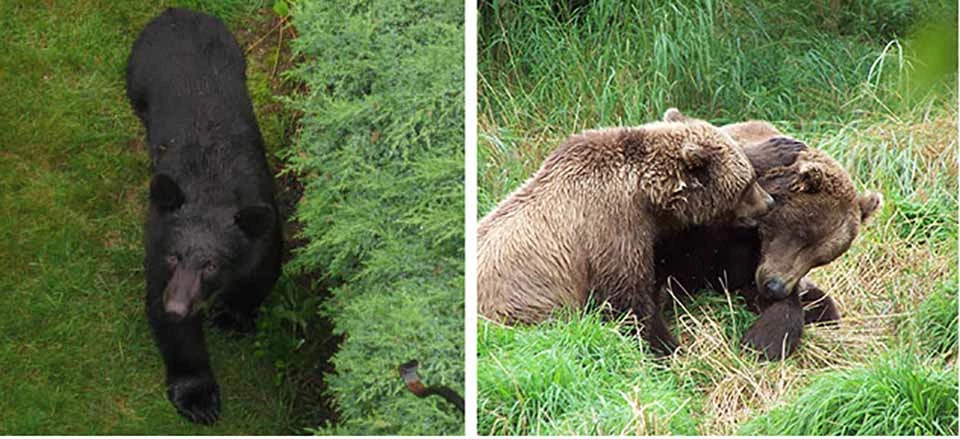Last updated: September 16, 2020
Article
How brown and black bear body sizes compare across North America

Ecosphere, Volume: 11, Issue: 8, First published: 31 August 2020, DOI: (10.1002/ecs2.3235)
When black and brown bears live together, does their body size differ due to competition?
This was the main question we explored in a recent study. We compiled datasets of black and brown bear body sizes across North America, including co-occurring populations of both species as well as those where only one species was present (Figure 1). Then we analyzed how males and females differ in size (in both species), how bear sizes vary from north to south latitudes across the continent, and whether bear populations subject to harvest differed in body size compared to those that are protected.

Ecosphere, Volume: 11, Issue: 8, First published: 31 August 2020, DOI: (10.1002/ecs2.3235)
As expected, we found that males are bigger than females in both species, but brown bear males tend to be even bigger proportionally to females than black bears. Unexpectedly, black bears, in general, tend to be about the same size regardless of the latitude where they live, while brown bears are larger at mid-latitudes and smaller at the northern and southern extents of their range (Figure 2). We suspect that brown bears are bigger when there are more resources available to them and that the change in brown bear size is likely due to more salmon being available at mid-latitudes. While we did not detect a direct effect of competition between the two species, the fact that the body size of black bears does not change with latitude as it does for brown bears suggests that brown bears outcompete black bears for resources, such as salmon. We also did not see that harvest had an impact on body size at the population level but suspect that our ability to detect the differences across harvested and protected populations was limited due to having few protected populations in our data and not having an indicator of harvest pressure. We hope that clarifying large-scale physiological patterns of bear sizes may assist in understanding past, present, and future changes to realized niches in relation to environmental, ecological, and anthropogenic changes and subsequent resiliency of species and populations.

Black bear, Judy Joly; brown bears, NPS/Kyle Joly
Body size plasticity in North American black and brown bears
Abstract
Body size reflects realized physiological niche width at the population level and provides insights into the potential resiliency of a species to natural and anthropogenic perturbations to ecosystems. We analyzed patterns of American black and brown bear body size through a meta‐analysis of data from 18 studies conducted across North America, to evaluate the effects of species, sex, latitude, sympatry, and harvest. We used a bootstrap model selection procedure, which accounted for differences in sample size and population variation between studies, to investigate patterns in body mass. As expected, we found that brown bears were generally larger than black bears and both species were sexually dimorphic (i.e., males were generally larger than females). Black bear body size was not related to latitude, whereas brown bear body size was greatest at intermediate latitudes, possibly due to the presence of salmon. Neither sympatry nor harvest was associated with body size for either species at the geographic scale of our meta‐analyses, but both may warrant consideration at the local scale. Body size, as an index of population health, reflects phenotypic plasticity within species and populations and may serve as a useful indicator of niche utilization. Indeed, understanding large‐scale physiological patterns such as these can assist in understanding past, present, and future changes to realized niches and subsequent resiliency of species and populations.
Cameron, M. D., G. V. Hilderbrand, K. Joly, J. H. Schmidt, D. D. Gustine, L. S. Mangipane, B. Mangipane, and M. S. Sorum. 2020. Body size plasticity in North American black and brown bears. Ecosphere 11(8): e03235
